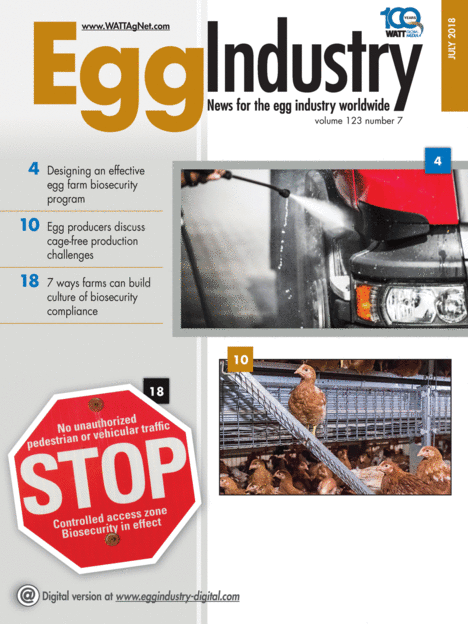BMW And Porsche's China Challenges: A Wider Industry Issue

Table of Contents
The Chinese automotive market, once a guaranteed path to prosperity for luxury brands like BMW and Porsche, is now presenting unprecedented challenges. This rapid shift signifies a broader transformation in the global automotive landscape, impacting not just these iconic marques, but automakers worldwide. This article delves into the specific hurdles faced by BMW and Porsche in China, analyzing the underlying factors and their implications for the future of the industry. We'll explore how these challenges represent a microcosm of the evolving China automotive market challenges affecting global players.
Intensifying Domestic Competition
The Chinese automotive market is experiencing a surge in domestic competition, creating a significantly more challenging environment for established international players. This intensified rivalry stems from two primary sources: the rise of Chinese EV brands and the aggressive strategies of established international competitors.
Rise of Chinese EV Brands
The meteoric rise of Chinese electric vehicle (EV) manufacturers like BYD, NIO, and Xpeng is dramatically altering the market dynamics. These brands are not just competing; they are rapidly gaining market share.
- Increased affordability and advanced technology: Chinese EVs offer compelling value propositions, combining competitive pricing with sophisticated technology, attracting a younger, tech-savvy demographic.
- Government incentives and supportive infrastructure: Government policies heavily favor domestic EV brands, offering substantial subsidies and creating a rapidly expanding charging infrastructure. This creates a robust ecosystem supporting their growth.
- Strong brand recognition and national pride: A powerful sense of national pride fuels consumer preference for homegrown brands, providing a significant advantage in the local market. This "buy local" sentiment is a considerable hurdle for foreign brands.
Pressure from Established International Competitors
The pressure isn't solely from emerging Chinese brands. Established international competitors like Mercedes-Benz and Audi are also aggressively vying for market share, forcing luxury brands like BMW and Porsche to adapt and innovate at an accelerated pace.
- Aggressive pricing strategies: The fierce competition necessitates aggressive pricing strategies from established players, squeezing profit margins and making it harder for luxury brands to maintain premium pricing.
- Intense competition requires significant investment: Maintaining a competitive edge demands substantial investments in research and development (R&D), marketing campaigns targeted at the Chinese consumer, and robust sales and service networks across the vast Chinese market.
Shifting Consumer Preferences
The Chinese automotive market is not just competitive; it's also evolving rapidly in terms of consumer preferences. Luxury is being redefined, and brands that fail to adapt will struggle.
Evolving Luxury Definitions
The traditional understanding of luxury—equating it solely with status symbols—is becoming outdated in China. Consumers are demanding more than just a prestigious badge; they want technology, sustainability, and personalized experiences.
- Prioritizing advanced technology: Features like advanced driver-assistance systems (ADAS), seamless connected car features, and personalized in-car digital experiences are now key differentiators.
- Growing demand for sustainable vehicles: Increasing environmental awareness is leading to a greater demand for electric and hybrid vehicles, pushing automakers to accelerate their electrification strategies.
- Younger generations' changing preferences: Younger Chinese consumers are less swayed by traditional brand prestige. They prioritize value for money, advanced technology, and highly personalized experiences.
Regional Variations & Localized Needs
China's immense size and geographical diversity mean there's no "one-size-fits-all" approach. Understanding regional variations is crucial for success.
- Diverse regional preferences: Vehicle size, features, and styling preferences vary significantly across different regions of China.
- Catering to cultural nuances: Successful brands adapt to varying cultural values and consumer behavior patterns in different regions, understanding and addressing these subtle differences.
Geopolitical and Economic Factors
Beyond competition and shifting preferences, geopolitical and economic factors further complicate the landscape for automakers in China.
Trade Tensions and Regulatory Hurdles
Navigating complex trade regulations and geopolitical uncertainties adds considerable risk.
- Impact of trade disputes and tariffs: Trade disputes and tariffs directly impact the cost of importing parts and vehicles, directly affecting profitability and pricing strategies.
- Logistical challenges due to varying regulations: Differing regulations and compliance requirements across provinces create significant logistical hurdles and add to operational complexities.
Economic Slowdown and Consumer Confidence
Economic fluctuations in China directly impact consumer spending and confidence, creating uncertainty in the automotive sector.
- Reduced demand for luxury goods: Economic slowdowns often lead to reduced demand for discretionary luxury items like premium automobiles.
- Impact on purchasing decisions: Economic uncertainty influences consumer behavior, leading to delays or cancellations of vehicle purchases.
Conclusion
The challenges confronting BMW and Porsche in China are indicative of broader trends reshaping the global automotive industry. Intensified domestic competition, evolving consumer preferences, and macroeconomic factors are all playing a significant role. To thrive in this dynamic environment, luxury brands must adapt swiftly, innovate constantly, and tailor their strategies to meet the unique and evolving demands of the Chinese consumer. Understanding the nuances of China Automotive Market Challenges is not just advantageous; it's crucial for survival and long-term success in this vital market. Ignoring these challenges risks losing significant market share in what remains a crucial global automotive market. Invest in thorough market research, localize your offerings effectively, and stay agile – these are the keys to navigating the complexities and realizing the full potential of this dynamic market.

Featured Posts
-
 Hugo De Waha Jeune Prodige Du Journalisme Remporte La Bourse Payot
May 26, 2025
Hugo De Waha Jeune Prodige Du Journalisme Remporte La Bourse Payot
May 26, 2025 -
 Naomi Campbell And Anna Wintour Met Gala 2025 Absence Sparks Speculation
May 26, 2025
Naomi Campbell And Anna Wintour Met Gala 2025 Absence Sparks Speculation
May 26, 2025 -
 Months Long Lingering Of Toxic Chemicals In Buildings After Ohio Train Derailment
May 26, 2025
Months Long Lingering Of Toxic Chemicals In Buildings After Ohio Train Derailment
May 26, 2025 -
 Finding Your Perfect Fit Nike Running Shoes For 2025
May 26, 2025
Finding Your Perfect Fit Nike Running Shoes For 2025
May 26, 2025 -
 Wounds Visible In Photo Of Kidnapped Idf Soldier Matan Angrest
May 26, 2025
Wounds Visible In Photo Of Kidnapped Idf Soldier Matan Angrest
May 26, 2025
Latest Posts
-
 Nba Playoffs Tyrese Haliburton Player Props And Game 2 Betting Guide Pacers Vs Knicks
May 28, 2025
Nba Playoffs Tyrese Haliburton Player Props And Game 2 Betting Guide Pacers Vs Knicks
May 28, 2025 -
 Tyrese Haliburton Performance Predictions Pacers Vs Knicks Game 2 Betting Analysis
May 28, 2025
Tyrese Haliburton Performance Predictions Pacers Vs Knicks Game 2 Betting Analysis
May 28, 2025 -
 Pacers Vs Hawks On March 8th How To Watch And Game Time
May 28, 2025
Pacers Vs Hawks On March 8th How To Watch And Game Time
May 28, 2025 -
 Pacers Vs Knicks Game 2 Tyrese Haliburton Prop Bets And Predictions
May 28, 2025
Pacers Vs Knicks Game 2 Tyrese Haliburton Prop Bets And Predictions
May 28, 2025 -
 Game 1 Aftermath Tyrese Haliburtons Girlfriends Savage Reaction
May 28, 2025
Game 1 Aftermath Tyrese Haliburtons Girlfriends Savage Reaction
May 28, 2025
